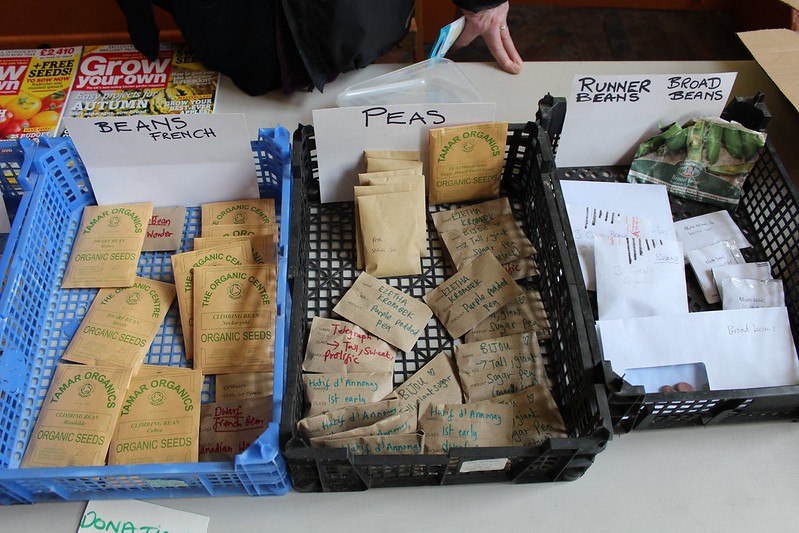
Flickr via Local Food Initiative
It’s nearly time to start seedlings, but you’ve noticed your seed supply is a bit thin. Or perhaps you’re bored with the varieties you typically grow and want to try something new. Seed swapping is the perfect way to top up your seed inventory on a budget.
What is seed swapping?
It’s exactly what it sounds like! Trading seeds with other gardeners to get rid of excess seed and discover new varieties without spending loads of money. Usually, seed swapping involves trading saved seeds, but that’s not always the case. Don’t be shy to ask about the provenance of the seed you’re receiving.
Benefits of seed swapping
But it’s so easy to buy seeds from seed catalogs! Why would you bother seed swapping at all? Here’s why seed swapping is such a worthwhile pursuit:
- It’s free. Although seeds are some of the cheapest gardening supplies, buying several packets does tend to add up. I’ve easily spent over $50 on a single seed order. If your gardening budget is tight, consider trading seeds instead of perusing through a seed supplier’s catalog.
- It’s a way to discover new plant varieties. Not all plant varieties are readily available. Many seed suppliers stock commonly requested varieties. You won’t have trouble finding beefsteak tomato seed anywhere, but if you’re searching for a rarer variety, a seed swap may be your best bet. Swapping is the perfect way to find new types otherwise unknown to you or unavailable elsewhere.
- It’s social. Gardeners don’t always get a chance to interact with one another. Gardening—aside from community gardening—is largely a solo activity. Going to organized seed swaps is an ideal opportunity to meet fellow gardeners and swap not just seeds but gardening-related tips and tricks.
- It produces less waste. Fewer seeds are wasted if you manage to swap your excess supply successfully. Some seeds have a shorter lifespan than others. If you have an abundance of freshly harvested parsnip seeds, for instance, sow what you need and see if you can trade with someone else since those seeds aren’t usually viable for longer than a year.
Where to swap seeds?
Wondering where to go to trade seeds with other gardeners? Check out local seed swapping events. In Canada, Seedy Saturdays are popular weekend events that help gardeners prep for the upcoming gardening season. Many Seedy Saturdays include seed retailer displays, but swapping is also encouraged. Find out more at the Seeds of Diversity website.
Seed Savers also has a page to facilitate seed swapping.
Community environmental days are anther possible seed swapping venue. If there’s no organized seed swap planned for your town’s next Earth Day event, ask if you can be involved in getting something started.
Your community garden is another place to chat with other gardeners and trade seeds. Inquire with green-thumbed community members, friends, and family. Remember, you don’t necessarily need to get something in return. Giving away seed is also perfectly acceptable!
Find out if your local garden club organizes seed swap events in the spring. Or check out online gardening forums to find seed swapping opportunities. I’ve met several gardeners on Instagram who are happy to trade and share seeds and plant cuttings.

Steph Coelho is a freelance writer gardening in zone 5b. She is a certified Square Foot Gardener and has taught various garden-related workshops. When she’s not digging in the dirt or writing, she’s cooking up fresh produce, running, or listening to her favorite podcasts.
Leave a Reply